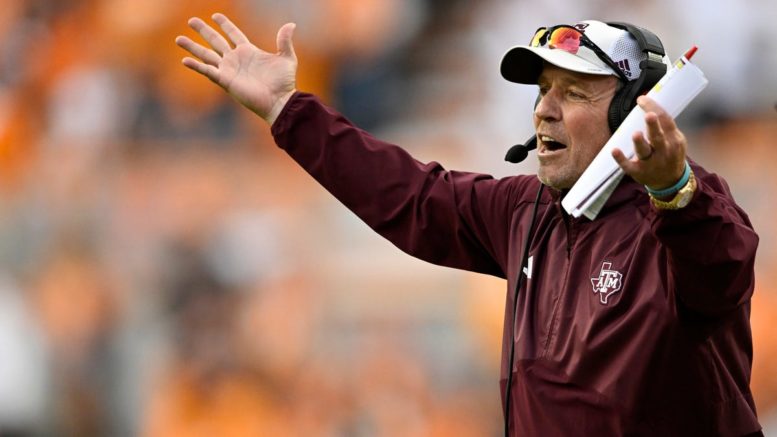Jimbo Fisher isn’t the problem. The people who keep wasting millions on men like him are — as they’re usually the same ones who act like they’re poor whenever student-athlete compensation is discussed.
Fisher is out in College Station after going 45-25, as his record feels like it was worse than that given the last few seasons. Since the 2020 COVID season, the Aggies were 19-15 and had lost 10 of their last 15 games against Power 5 teams.
But, that was only part of it.
Fisher’s failure on the sidelines looks even worse when you compare him to the man he replaced, Kevin Sumlin — Texas A&M’s first Black head football coach. Sumlin was 51-26 during his tenure with the Aggies, and while he was there longer than Fisher, he also had the only 11-win season Texas A&M had enjoyed since 1998. His tenure — with the help of Johnny Manziel and Mike Evans — is what lifted expectations at the school for them to go after a coach with a national championship on his resume like Fisher has — thanks to Jameis Winston.
“The assessment that I delivered was that we are not reaching our full potential,” said Texas A&M Athletic Director Ross Bjork about Fisher’s firing, adding that the program was “stuck in neutral.”
“We are not in the championship conversation and something was not quite right about our direction and the plan. We should be relevant on the national scene.”
When Fisher came to College Station from FSU, he signed a 10-year, $75 million fully guaranteed deal in 2017. In 2021, his contract extension took his annual salary from $7.5 million to $9 million as it was worth $95 million guaranteed in total. Now he’ll receive more than $76 million after getting fired due to his buyout.
“Let me be very clear in this next part: Texas A&M athletics and the 12th Man Foundation will be the sole sources of the necessary funds covering these transition costs,” Bjork explained.
Every athlete at Texas A&M, and throughout the country, should be giving the brass at their institutions the side-eye. The money has always been there. They just don’t want to give it to the people who make the money — the players.
Don’t be fooled, NIL isn’t the answer to player compensation. It’s a Band-Aid on a broken arm, as it doesn’t give players their rightful piece of a multibillion-dollar industry.
“You might regret asking Congress to intervene here . . . I’d be real careful about inviting Congress to micro-manage your business . . . I’ve got a lot of sympathy for the kids, I’ve got to tell you. The kids make this all possible,” John Kennedy (Louisiana’s Republican Senator) told NCAA President Charlie Baker in a recent report from USA Today Sports on the recent NIL hearing on Capitol Hill.
“I think we’ve got to find some way to give these student-athletes a voice. Currently, I think there’s a huge power disparity,” added Josh Hawley, the Republican Senator from Missouri.
The NCAA has been flailing ever since the day NIL started, which has led to this moment because, instead of figuring out a successful way to implement it, they spent all their time fighting something inevitable. And as time goes on, people are starting to realize that NIL isn’t even close to being enough for the players. Texas A&M’s handling of Jimbo Fisher just gave the athletes more leverage in their fight. Because if there’s enough money to pay off bad head coaches, then there’s surely enough to spend on great players.
Original source here
#Texas #showed #schools #money #pay #studentathletes





